Service Alert
July 1 - Canada Day
CELA will be closed on Tuesday, July 1st for Canada Day. Our office will reopen and our Contact Centre services will resume on Wednesday, July 2nd. Enjoy your holiday!
CELA will be closed on Tuesday, July 1st for Canada Day. Our office will reopen and our Contact Centre services will resume on Wednesday, July 2nd. Enjoy your holiday!
Showing 141 - 160 of 1499734 items
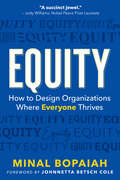
By Minal Bopaiah. 2021
A fast and engaging read, Equity helps leaders create more inclusive organizations using human-centered design and behavior change principles.Even the…
most passionate advocates for diversity, equity, and inclusion have been known to treat equity as the middle child—the concept they skip over to get to the warm, fuzzy feelings of inclusion. But Minal Bopaiah shows throughout this book that equity is critical if organizations really want to leverage differences for greater impact.Equity allows leaders to create organizations where employees can contribute their unique strengths and collaborate better with peers. Bopaiah explains how leaders can effectively raise awareness of systemic bias and craft new policies that lead to better outcomes and lasting behavioral changes. This book is rich in real-world examples, such as managing partners at a consulting firm who learn to retell their personal stories of success by crediting their systemic advantages and news managers at NPR who redesign their processes to support greater diversity among news sources. This slender book expands DEI past human resources initiatives and shows how leaders can embed equity into core business functions like marketing and communications. Filled with humor, heart, and pragmatism, Equity is a guidebook for change, answering the question of how that so many leaders are asking today.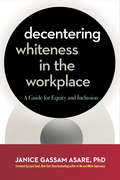
By Janice Gassam Asare. 2023
Your DEIJ efforts are stagnating because you continue to center whiteness. Creating a truly anti-racist organization requires learning how to…
identify and rectify the systemic, and often unconscious, centering of white culture and values in the workplace.Corporate America continues to struggle with racial equity in a post-George Floyd world. As the United States becomes more diverse and the public consciousness continues to shift, successful racial equity efforts in the workplace are needed now more than ever. Decentering Whiteness in the Workplace exposes the ways that white culture and expectations are centered in the modern American workplace and the fears within corporate spaces about talking candidly, openly, and honestly about whiteness, white supremacy, and anti-Blackness.Readers will discover: A direct and straightforward analysis about what white-centering is An evaluation of the different ways that whiteness is centered in the workplace, such as bereavement and holiday policies and dress codes A guide on how to recognize and decenter whiteness within oneself and at work Solutions for people to contribute individually and systemically to anti-oppressionDecentering Whiteness in the Workplace provides a crucial guidebook with practical solutions for leaders, DEIJ practitioners, and anyone hoping to truly create an anti-racist workplace.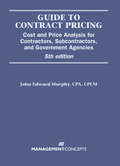
By John Edward Murphy. 2009
Perform Contracting Successfully!This master reference — in its fifth edition — contains everything you need to know about government pricing…
rules and regulations in one easy-to-use volume.Guide to Contract Pricing: Cost and Price Analysis for Contractors, Subcontractors, and Government Agencies, Fifth Edition, explains how the government conducts business and walks you through every step of the contracting process. This fully updated edition includes a new chapter on the role of auditors in contract pricing as well as five new detailed appendices. You'll be able to:+ Master the steps of the sealed bid process+ Improve your skills at evaluating bids, proposals, and quotations+ Perfect your ability to analyze direct and indirect labor costs+ Improve your chances for securing a fair and reasonable price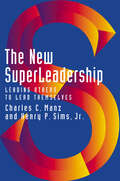
By Charles C. Manz, Henry P. Sims. 2001
The truly effective leader today must be one who leads others to lead themselves. The rapid pace of change demands…
fast and flexible responses throughout the organization-there's no time to wait for directives from the top. And the highly-skilled workers so vital to organizational success also demand a high degree of independence. Old-fashioned command-and-control leadership is just too slow and stifling. Charles Manz and Henry Sims, Jr. pioneered the concept self-leadership in their bestselling book SuperLeadership. In The New SuperLeadership, the authors present new content and examples designed to help leaders develop the kind of autonomous, quick-reacting workforce necessary to thrive in these turbulent times. This enriched and expanded edition takes the concepts in the first edition to another level by emphasizing a pragmatic, how-to approach for developing leaders at every level of the organization. Drawing on contemporary examples and profiles, many from the high-tech and information sectors, Manz and Sims shatter the myth of the traditional, aggrandized versions of "heroic" leadership. They show that a leader truly becomes successful by turning followers into extraordinary self-leaders-pillars of strength that will support the organization at every level. They detail a series of action-oriented steps through which the SuperLeader provides an opportunity for followers to express and develop their own leadership skills-and in the process become highly motivated, dynamic contributors. The New SuperLeadership critically reviews traditional leadership styles, vividly illustrating the drawbacks of each: the "Strong Man" whose reliance on fear-based compliance smothers initiative; the "Transactor" who promotes a narrow "what's in it for me?" mentality; and the "Visionary Hero" whose powerful personality inspires commitment but inadvertently discourages independent thinking. By bringing out the leader in every employee, SuperLeadership enables leaders to avoid these pitfalls and develop an enthusiastic, innovative and energized workforce. The New SuperLeadership is a radically new way of looking at leadership, offering a leadership paradigm ideally suited to the realities of the modern workplace. It reveals that the only way to succeed today is to tap into the innate leadership potential that lies within every employee.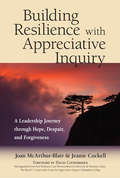
By Jeanie Cockell, Joan McArthur-Blair. 2018
Journey through hope, despair, and forgivenessLeaders cannot predict the complex challenges they are called on to face. Veteran consultants Joan…
McArthur-Blair and Jeanie Cockell show that Appreciative Inquiry (AI) is an invaluable tool to build resilience.AI is a widely used change approach that emphasizes identifying what's working well in a system. Leaders can use AI to increase their ability to weather the storms they'll inevitably encounter and be resilient. A profound guide, this book features personal accounts from leaders across a variety of settings describing how they've practiced appreciative resilience in the ongoing cycle of hope, despair, and forgiveness.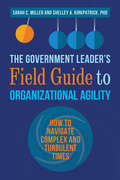
By Sarah C. Miller, Shelley Kirkpatrick. 2021
This is the first book to fully adapt the principles of agility for government leaders who want to make their…
organizations more effective and nimble while better serving their public mission.This practical resource will equip government leaders at all levels with evidence-based, hands-on guidance for transforming their organizations, enabling them to better serve the public and their customers. While many books focus on organizational agility for leaders of for-profit companies, this is the first one tailored to the unique requirements government leaders face. They must find a way to accomplish their mission while navigating constant change. Government leaders at all levels must maneuver their organizations through new, often complex challenges, ranging from new laws that impact their agencies, new technologies, changes in leadership, and unexpected events. By explaining how to manage and organize work differently, this guide will help leaders weather the storm of that constant change so they can help their agencies realize their missions and serve the public interest.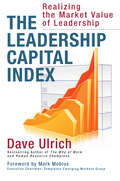
By Dave Ulrich. 2015
When it comes to evaluating a firm, leadership matters. We know that financial outcomes can predict about 50 percent of…
a firm's market value. Intangibles like strategy, brand, talent, R&D, innovation, risk, and so on account for the rest. But leadership underlies them all. And despite how important we know it is, we've been forced to rely on subjective and unreliable ways to measure its impact—until now.In this landmark book, leadership scholar, author, and consultant Dave Ulrich proposes a "leadership capital index"—a Moody's or Standard and Poor's rating for leadership. Drawing on research from investors and business leaders, and synthesizing the work of dozens of consulting firms and leadership experts, Ulrich analyzes two broad domains, each comprising five factors. The individual domain includes personal qualities, strategic prowess, execution proficiency, interpersonal skills, and fit between the leader's style and the organization's market promises. The organizational domain encompasses a leader's ability to create customer-focused cultures, manage talent, demand accountability, use information to gain competitive advantage, and set up work processes to deal with change. Ulrich details rigorous metrics and methods for evaluating leaders on each of these factors. The result is a groundbreaking book that will be of vital interest not only to equity and debt investors but also to boards of directors, executive teams, human resource and leadership development professionals, government and ratings agencies—and of course to leaders themselves.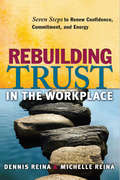
By Dennis S. Reina, Michelle L. Reina. 2010
Are you feeling less engaged, less committed and more skeptical at work? Do you find yourself isolated? Or are you…
caught in the middle of co-workers’ interpersonal conflicts? If so, you may be experiencing the symptoms of broken trust in workplace relationships. Small but hurtful situations accumulate over time into the confidence-busting, commitment-breaking, energy-draining patterns consistent with broken trust. Broken trust is simply the natural outcome of people interacting with one another. Everyone has experienced gossiping, missed deadlines, someone taking credit for other people’s work and “little white lies.” You may have been hurt. You may have realized that you inadvertently let others down. Or, you may be wondering how to help others reeling from broken trust. No matter your vantage point, Dennis Reina and Michelle Reina’s new book offers a proven seven-step process to heal pain and rebuild trust. This compassionate, practical approach will help you reframe the experience, take responsibility, forgive, let go and move on. Through healing, you will want to go to work again. You will feel safe to be more fully “who” you are and, once again give your organization your best thinking, highest intention, risk-taking and creativity. And in a place of self-discovery, self-trust and authenticity, you will connect more fully with others in your personal life as well. While there have been many books on recovering from betrayal in personal relationships, this is the first book to focus specifically on the workplace, and the first to give equal weight to what to do when you have hurt others. It is firmly grounded in the Reinas’ 20 years of rigorous research on trust and the empathy they have developed from supporting thousands of people on their healing journeys.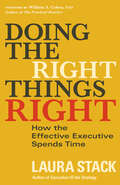
By Laura Stack. 2015
A How-To Guide for the Modern LeaderInspired by Peter Drucker's groundbreaking book The Effective Executive, Laura Stack details precisely how…
21st-century leaders and managers can obtain profitable, productive results by managing the intersection of two critical values: effectiveness and efficiency.Effectiveness, Stack says, is identifying and achieving the best objectives for your organization—doing the right things. Efficiency is accomplishing them with the least amount of time, effort, and cost—doing things right. If you're not clear on both, you're wasting your time. As Drucker put it, "There is nothing so useless as doing efficiently that which should not be done at all." Stack's 3T Leadership offers twelve practices that will enable executives to be effective and efficient, grouped into three areas where leaders spend their time: Strategic Thinking, Teamwork, and Tactics. With her expert advice, you'll get scores of new ideas on how you, your team, and your organization can boost productivity.
By Mark Miller. 2011
Teams are critical to the success of every organization. Departmental, interdepartmental, cross-functional, ad hoc, task-specific—teams do everything from planning the…
office party to setting the annual budget to establishing performance goals. But what separates the teams that really deliver from the ones that simply spin their wheels? What is the secret of high-performance teams? As he did in The Secret, Mark Miller uses a compelling business fable to reveal profound yet easily grasped truths that can dramatically transform any organization. Debbie Brewster, the heroine of The Secret, has been promoted and is now struggling with taking her new team to the next level. Her old mentor, Jeff Brown, the company’s CEO, sends her out to find the secret of teams. On her journey she learns from three very different teams—the Special Forces, NASCAR, and a local restaurant. Debbie and her team discover the three elements that all successful teams have in common. But that’s just the beginning. The devil is in the details, as the story of Debbie’s efforts to actually implement the three elements shows. You’ll learn how to change entrenched ways of thinking and acting, what you have to do to optimize each of the three elements of a successful team, how to measure your progress, and more. Creating high-performance teams does more than just give your organization a competitive advantage. It can be a performance multiplier that significantly improves results while honoring and developing people. It may be the ultimate win-win-win that your organization is seeking.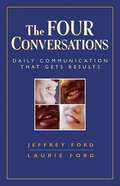
By Jeffrey D. Ford, Laurie W. Ford. 2009
Talk is powerful. Engaging in the right conversation at the right time is key to both personal and organizational success.…
And it isn’t just ‘difficult’ conversations that matter. The Four Conversations clearly demonstrates it is the everyday dialogue we have with one another that is critical. Armed with a solid body of research and their own first-hand observations, Jeffrey and Laurie Ford identify four types of conversations that every one of us must use to get things done: initiative conversations to introduce something new; understanding conversations to help people relate to new ideas or processes; performance conversations to request specific actions and results; and closure conversations to complete work and give people a sense of accomplishment . They identify the specific elements that make each of these conversations successful and show how they can be put together in different ways to achieve different objectives. The Four Conversations demonstrates how to use the right conversation at the right time—planning and starting each one well, and finishing every conversation effectively—to produce the results we want and the improved productivity our organizations need. And through dozens of personal stories and sample dialogues, the authors illustrate how real people in real situations have used the four conversations, either alone or in combination, to more effectively combat common workplace problems and lay the foundations for enduring success: stronger relationships, better buy-in, and a greater feeling of personal and professional achievement for everyone.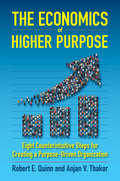
By Robert E. Quinn, Anjan V. Thakor. 2019
Two distinguished scholars offer eight steps to help organizations discover and embrace an authentic higher purpose—something that will dramatically improve…
every aspect of any enterprise, including the bottom line.What does a lofty notion like purpose have to do with business basics like the bottom line? Robert E. Quinn and Anjan J. Thakor say pretty much everything. Leaders and managers are taught that employees are self-interested and work resistant, so they create systems of control to combat these expectations. Workers resent these systems, and performance suffers. To address the performance issues, managers double down on the coercion, creating a vicious cycle and a self-fulfilling prophecy. But there is a better way. Quinn and Thakor show that when an authentic higher purpose permeates business strategy and decision-making, the cycle is broken. Employers and employees see themselves as working together toward an inspiring goal, not just trying to hit quarterly targets. They fully engage, become proactive contributors, and, ironically, easily exceed those quarterly targets. Based on their widely acclaimed Harvard Business Review article, Quinn and Thakor offer eight sometimes surprising steps for shifting from a transaction-oriented mind-set focused on constraints to a purpose-oriented mind-set focused on possibility. This iconoclastic book will help any organization discover its authentic purpose and weave it into the fabric of everything it does, leading to unprecedented levels of personal satisfaction, service and product innovation, and economic growth.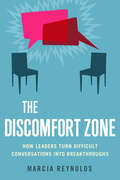
By Marcia Reynolds. 2014
You want people to stretch their limits, but your conversations meant to help them often fall flat or backfire, creating…
more resistance than growth. Top leadership coach Marcia Reynolds offers a model for using the Discomfort Zone—the moment when the mind is most open to learning—to prompt people to think through problems, see situations more strategically, and transcend their limitations. Drawing on recent discoveries in the neuroscience of learning, Reynolds shows how to ask the kinds of questions that short-circuit the brain&’s defense mechanisms and habitual thought patterns. Then, instead of being told, people see for themselves the insightful and often profound solutions to what is stopping their progress. The exercises and case studies will help you use discomfort in your conversations to create lasting changes and an enlivened workforce.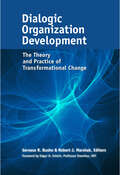
By Robert J. Marshak, Gervase R. Bushe. 2015
A Dynamic New Approach to Organizational ChangeDialogic Organization Development is a compelling alternative to the classical action research approach to…
planned change. Organizations are seen as fluid, socially constructed realities that are continuously created through conversations and images. Leaders and consultants can help foster change by encouraging disruptions to taken-for-granted ways of thinking and acting and the use of generative images to stimulate new organizational conversations and narratives. This book offers the first comprehensive introduction to Dialogic Organization Development with chapters by a global team of leading scholar-practitioners addressing both theoretical foundations and specific practices.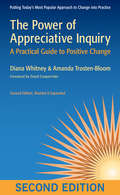
By Amanda Trosten-Bloom, Diana D. Whitney. 2010
NEW EDITION, REVISED AND UPDATED The Power of Appreciative Inquiry describes the internationally embraced approach to organizational change that dramatically…
improves performance by engaging people to study, discuss, and build upon what’s working – strengths – rather than trying to fix what’s not. Diana Whitney and Amanda Trosten-Bloom, pioneers in the development and practice of Appreciative Inquiry (AI), provide a menu of eight results-oriented applications, along with case examples from a wide range of organizations to illustrate Appreciative Inquiry in action. A how-to book, this is the most authoritative and accessible guide to the newest ideas and practices in the field of Appreciative Inquiry since its inception in 1985. The second edition includes new examples, tools, and tips for using AI to create an enduring capacity for positive change, along with a totally new chapter on award-winning community applications of Appreciative Inquiry.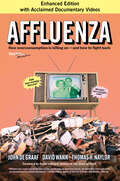
By David Wann, Thomas H. Naylor, John De Graaf. 2014
NEW EDITION, REVISED AND UPDATEDaffluenza, n. a painful, contagious, socially transmitted condition of overload, debt, anxiety, and waste resulting from…
the dogged pursuit of more.We tried to warn you! The 2008 economic collapse proved how resilient and dangerous affluenza can be. Now in its third edition, this book can safely be called prophetic in showing how problems ranging from loneliness, endless working hours, and family conflict to rising debt, environmental pollution, and rampant commercialism are all symptoms of this global plague. The new edition traces the role overconsumption played in the Great Recession, discusses new ways to measure social health and success (such as the Gross Domestic Happiness index), and offers policy recommendations to make our society more simplicity-friendly. The underlying message isn't to stop buying—it's to remember, always, that the best things in life aren't things.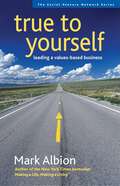
By Mark Albion. 2006
How do you build the kind of company you've always wanted to work in--one that serves people and the planet…
while being financially successful, too? What do you do when you believe that business should serve the common good, but everyday business pressures--meeting payroll, battling competition, keeping customers and investors happy--are at a fever pitch? Leading a small business when you measure success more broadly than with a single financial bottom line is no easy task. True to Yourself is a practical guide to doing just that. It provides tools you can use to combine profit with purpose, margin with mission, value with values.
By Chuck Collins. 2012
Over the past thirty years, we’ve seen a radical redistribution of wealth upward to a tiny fraction of the population.…
Here, activist Chuck Collins explains how it happened and marshals wide-ranging data to show exactly what the 99/1 percent divide means in the real world and the damage it causes to individuals, businesses, and the earth. Most important, he answers the burning question, what can be done about it? He offers a common-sense guide to bringing about a society that works for everyone: the 100 percent. This is a struggle that can be won. After all, the odds are 99 to 1 in our favor.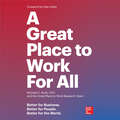
By Michael C. Bush, Great Place to Work. 2018
Greatness Redefined for the 21st CenturyToday's business climate is defined by speed, social technologies, and people's expectations of "values" besides…
value. As a result, leaders have to create an outstanding culture for all, no matter who they are or what they do for the organization. This groundbreaking book, from the creators of the gold-standard Fortune 100 Best Companies to Work For list, shows how it's done. Through inspiring stories and compelling research, the authors demonstrate that great places to work for all benefit the individuals working there and contribute to a better global society—even as they outperform in the stock market and grow revenue three times faster than less-inclusive rivals. This is a call to lead so that organizations develop every ounce of human potential.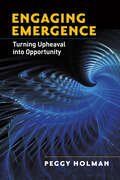
By Peggy Holman. 2010
Change is everywhere these days—at times it seems like barely controlled chaos. Yet within this turmoil are the seeds of…
a higher order. When a new system arises from the ashes of the old, science calls the process "emergence." By engaging it, you can help yourself and your organization or community to successfully face disruption and emerge stronger than ever.In this profound book, Peggy Holman offers principles, practices, and real-world stories to help you work with compassion, creativity, and wisdom through the entire arc of change—from disruption to coherence. You'll learn what to notice, what to explore, what to try, and what mindset opens new possibilities. This work can be challenging but also tremendously rewarding. It enables new and unlikely partnerships and develops breakthrough projects. You become part of a process that transforms the culture itself.